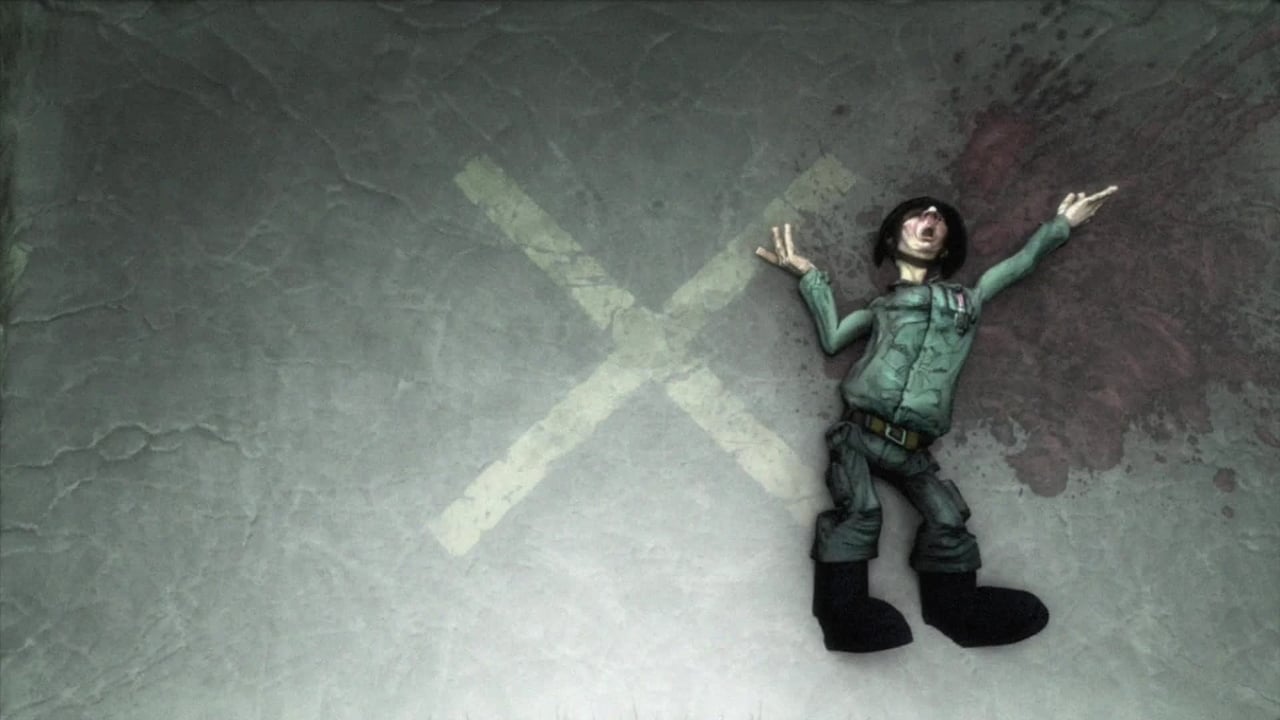Harockerce
What a beautiful movie!
Claysaba
Excellent, Without a doubt!!
mraculeated
The biggest problem with this movie is it’s a little better than you think it might be, which somehow makes it worse. As in, it takes itself a bit too seriously, which makes most of the movie feel kind of dull.
Catherina
If you're interested in the topic at hand, you should just watch it and judge yourself because the reviews have gone very biased by people that didn't even watch it and just hate (or love) the creator. I liked it, it was well written, narrated, and directed and it was about a topic that interests me.
Lee Eisenberg
Tomasz Bagiński's "Sztuka spadania" ("Fallen Art" in English) poses the question of what constitutes glory amid war. The main character makes short movies featuring the dead bodies of soldiers pushed off of a springboard onto a slab of concrete. In short, he turns the soldiers' entire history into his own entertainment. I get the feeling that Bagiński made this as a reference to his own government's participation in the invasion of Iraq. Poland's government, like the rest of the governments in the so-called coalition of the willing, joined up with the invasion and occupation despite massive opposition among its population. I don't know how many people Poland lost in that most ill conceived of wars. There can be no doubt that it will weigh on the Poles' conscience for decades to come.Anyway, this is a good cartoon. The best cartoons are these short ones, as opposed to the features voiced by the celebrities of the moment.
MikouaK
After seeing Tomek Baginski's "Katedra" I thought nothing could beat it. "Sztuka spadania" is at least as good as the previous film but impressive in a different manner. "Katedra" is a masterpiece of suspense, climate and superb computer graphics skills. In terms of craftsmanship, "Sztuka spadania" shows huge (I dare say) advancement in some areas of lighting, rendering and animation (here I bow low to the whole team of the film's creators). In terms of script/directing it's a whole different story. Whereas "Katedra" made me shiver in awe (realy!), "Sztuka spadania" made my sensors of wicked humor rage! Although some of the scenes might appear macabre, the whole idea, for me, is totally hilarious. The short story is brilliantly spiced up with the music of a Romanian brass band (Fanfare Ciocarlia I suppose). To cut the long story short, "Sztuka spadania" is a must see! BTW, if I could decide on the Oscars... ehh... Next time!
edark
It is not about how hard is producing animations. The topic is much more deep. The short tells how human life is wasted in making real the project of war. In war, soldiers are sent to die for beautiful causes like destroy Vietnam to save democracy, steal the oil of Iraq or make a cartoon with corpses.Only people who make war can feel "beautiful" that kind of art: the art of war.For example, Hitler wanted to make a perfect race, no matter the sacrifice done or people to kill: he sees art in what he does, but no other people, thats why the theater in the short is empty.Also you can find a superb animation and a fresh way to expose the anti-war message.
Polaris_DiB
This little short operates on two levels.The first is it's humorous story, that of a bunch of soldiers--we aren't really given who they are or what they're doing there--that are shoved off of a tall diving board to their deaths, and then photographed to be sent to this fierce fat guy who is collecting them for an animation.The second is an exploration of animation itself, as it is done in very caricaturist CG but has the second level of being something of a stop-motion animation. The fat guy takes the pictures of the dead soldiers and puts them into a projector to make a very macabre dance... and nothing is funnier than watching him dance along with hundreds of dead soldiers.Could this possibly be something about the amount of death and toil that goes into making precise art? I'd like to think so, otherwise I can't really see an excuse for it, even though it is quite definitely the perfect example of morbid comedy.--PolarisDiB

